
Anti-Reflective Coating: Unveiling Its Purpose and Benefits
Posted by Team Debby on 17th Mar 2024
Anti-Reflective Coating: Unveiling Its Purpose and Benefits
Anti-reflective coating, commonly known as AR coating, is a thin film applied to the surface of lenses and other optical devices to reduce reflection. This technological advancement allows for more light to pass through, improving the efficiency of the lens and the overall visual experience. By minimizing the glare from sunlight and artificial light sources, AR coatings drastically enhance the clarity and contrast of what we see.
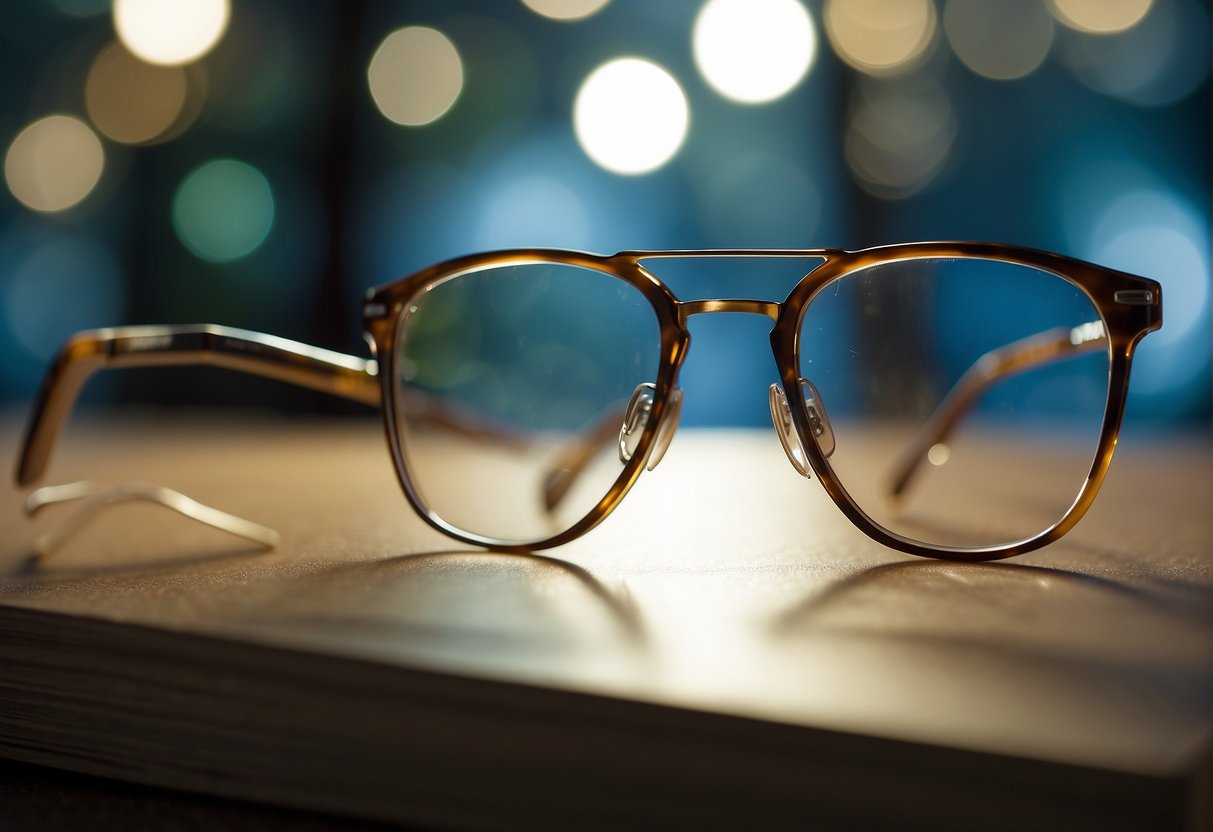
When light travels through an untreated lens, a significant portion of it is reflected away. This can result in a decrease in visual acuity and can cause the eyes to strain. AR coatings work on a microscopic level, employing a principle called destructive interference to cancel out the light reflected from the surfaces of a lens. This process ensures that more light reaches the eye, resulting in improved vision, especially in challenging lighting conditions. Used not only on eyewear, AR coatings are also essential in numerous other applications, ranging from camera lenses to solar panels, enhancing performance and user experience.
Key Takeaways
- AR coating enhances visual clarity by reducing surface reflections.
- It benefits vision by increasing light transmission to the eye, improving contrast and reducing glare.
- Beyond vision, AR coatings are integral to improving the efficiency and performance of various optical devices.
Fundamentals of Anti-Reflective Coatings
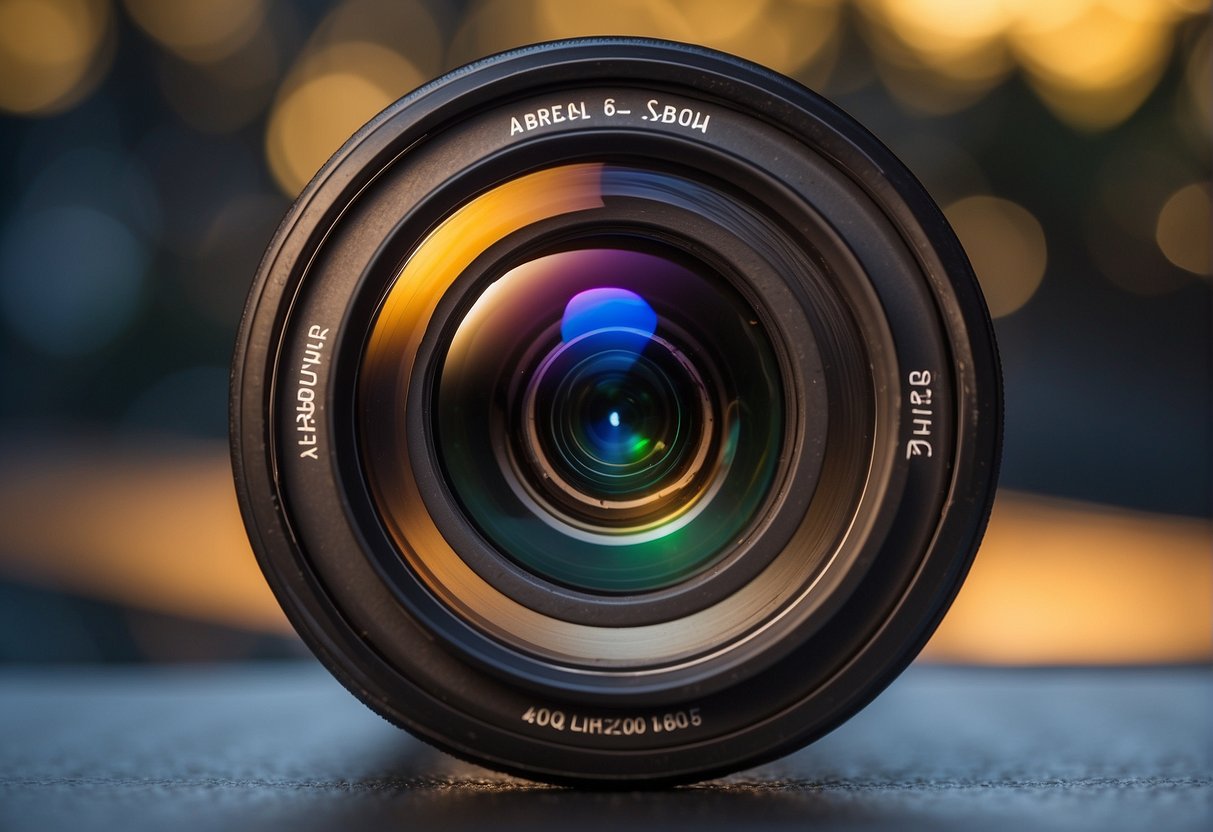
Anti-reflective coatings are thin layers applied to surfaces to reduce reflection and improve the transmission of visible light. When light strikes an untreated transparent surface, a significant portion reflects back, causing glare and reducing clarity. With anti-reflective coatings, we can minimize reflection through destructive interference.
We apply these coatings, typically made of metallic oxides, onto a substrate like glasses or camera lenses to enhance performance. The coating's index of refraction is carefully designed to be intermediate between air and the substrate. This composition is crucial for its intended purpose, dictating light's transmission and reflection.
How It Works:
- When light hits the coated surface, it splits into two rays.
- One ray reflects off the top surface of the coating, while the other refracts into and then reflects off the substrate.
- These two rays can interfere destructively if the coating's thickness is such that the rays are out of phase by half a wavelength.
Key Properties:
- Refractive Index: The coating's refractive index is tailored to promote destructive interference for specific wavelengths, usually in the visible spectrum.
- Thickness: Precision is key, as this determines the phase shift necessary for canceling out reflections.
By using layers of varying refractive indices, we engineer coatings to target multiple wavelengths. This way, we can reduce reflection across a broader range of the spectrum. This enhancement leads to clearer, more vivid visuals in various applications, from optometry to photography.
Benefits of Anti-Reflective Coatings
Anti-reflective coatings provide significant advantages to those requiring corrective lenses. We see numerous improvements in both vision and comfort, which we'll explore in the following subsections.
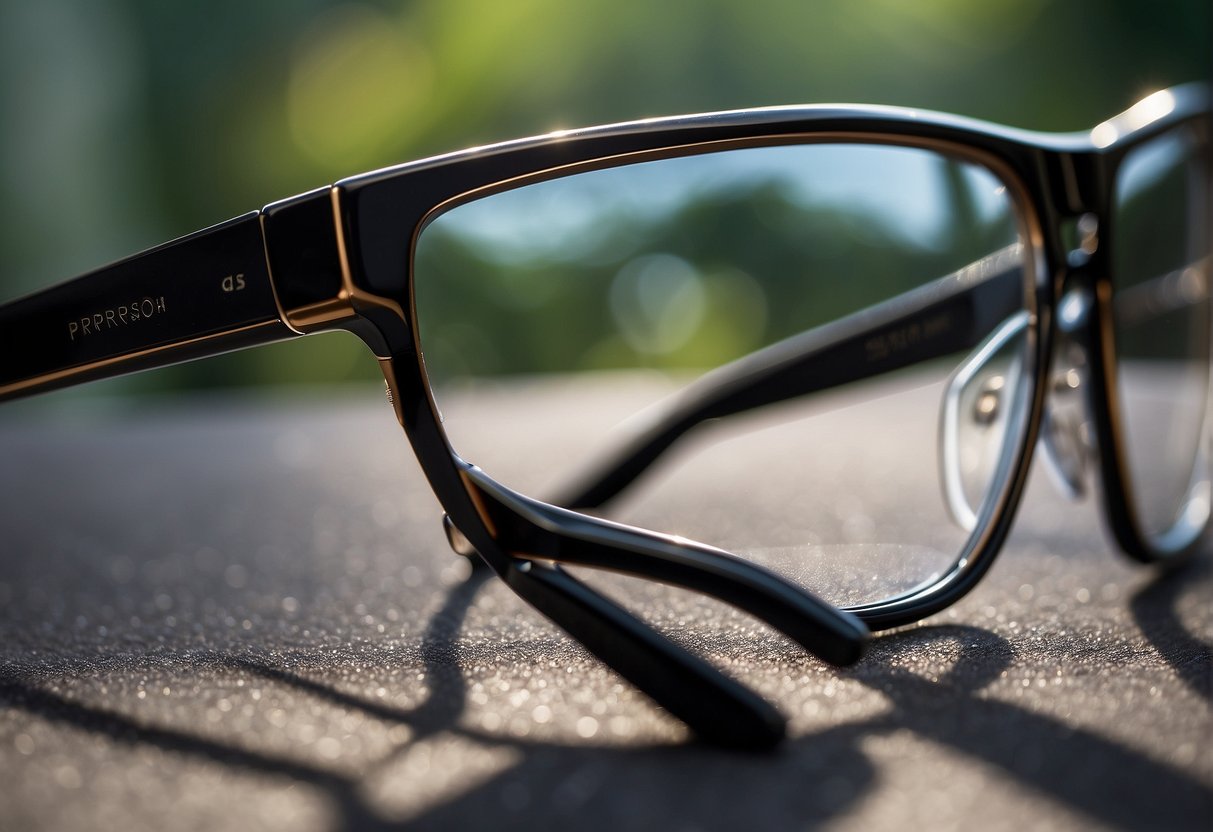
Enhanced Visual Acuity
By minimizing reflections on the surface of the lens, anti-reflective coatings allow more light to pass through to the eye. This improvement is particularly noticeable in low-light conditions or while night driving, where we experience better clarity and contrast. For those with cataracts, the increased light transmission can make a noticeable difference in seeing details.
Reduced Eye Strain
With a reduction in glare from artificial lighting or digital screens, anti-glare coatings can decrease the eye strain we often feel after prolonged exposure. This means that during extended periods of use, like working at a computer, we enjoy a more comfortable visual experience with less fatigue.
Improved Aesthetics
Lenses with anti-reflective coatings also benefit our appearance and eye contact. They virtually eliminate the reflections that can obscure our eyes, ensuring that our facial expressions are clearly visible to others. This fosters better personal and professional interactions by allowing direct eye contact.
Applications Beyond Eyewear
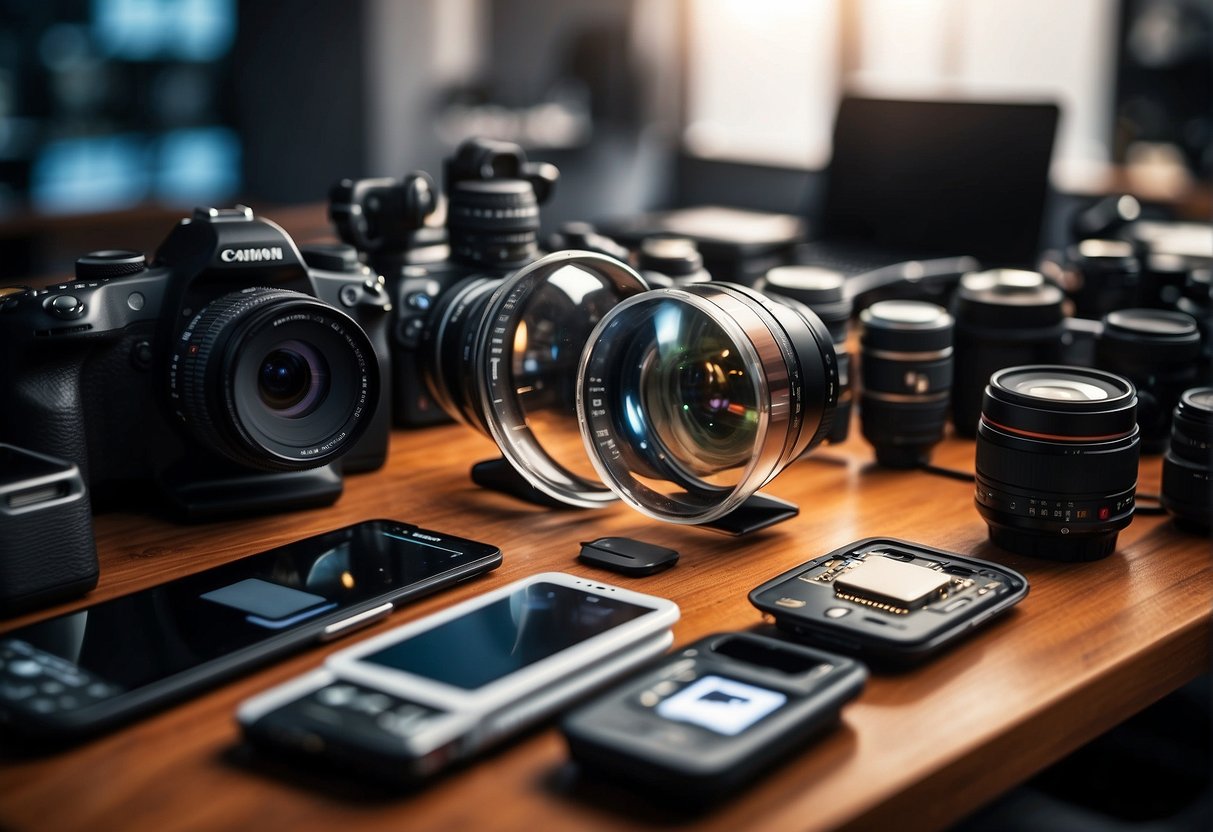
Anti-Reflective (AR) coatings enhance the performance and clarity of optical devices by minimizing glare and reflections. These coatings are critical in various fields outside of eyewear, where precision and clear vision are mandatory.
Technological Usage
In the realm of technology, we apply AR coatings to camera lenses to reduce lens flare and ghosting, which are common problems in photography. This enhances image quality by improving contrast and color fidelity. Here is how AR coatings benefit various photographic equipment:
- DSLR Cameras: AR coatings are used extensively on the lenses and sensor glass to increase light transmission and image quality.
- Smartphone Cameras: Many manufacturers apply these coatings to tiny lenses to ensure photos and videos are clear, despite the challenges of a compact form factor.
Scientific Instruments
The application of AR coatings in scientific instruments significantly improves observational accuracy and data quality. We find these coatings indispensable on the following scientific optics:
- Telescopes: Both amateur and professional astronomers benefit from AR-coated telescope lenses that reduce starlight reflections, enhancing our view of the cosmos.
- Microscopes: Microscopic analysis is sharpened with AR coatings, as they reduce glare on slides, which is essential for accurate specimen examination.
Polarized lenses, often used in sunglasses, also incorporate AR coatings like Crizal Prevencia. These specialized coatings filter out harmful blue light, potentially reducing digital eye strain from prolonged exposure to computer screens and other digital devices.
Choosing the Right AR Coating
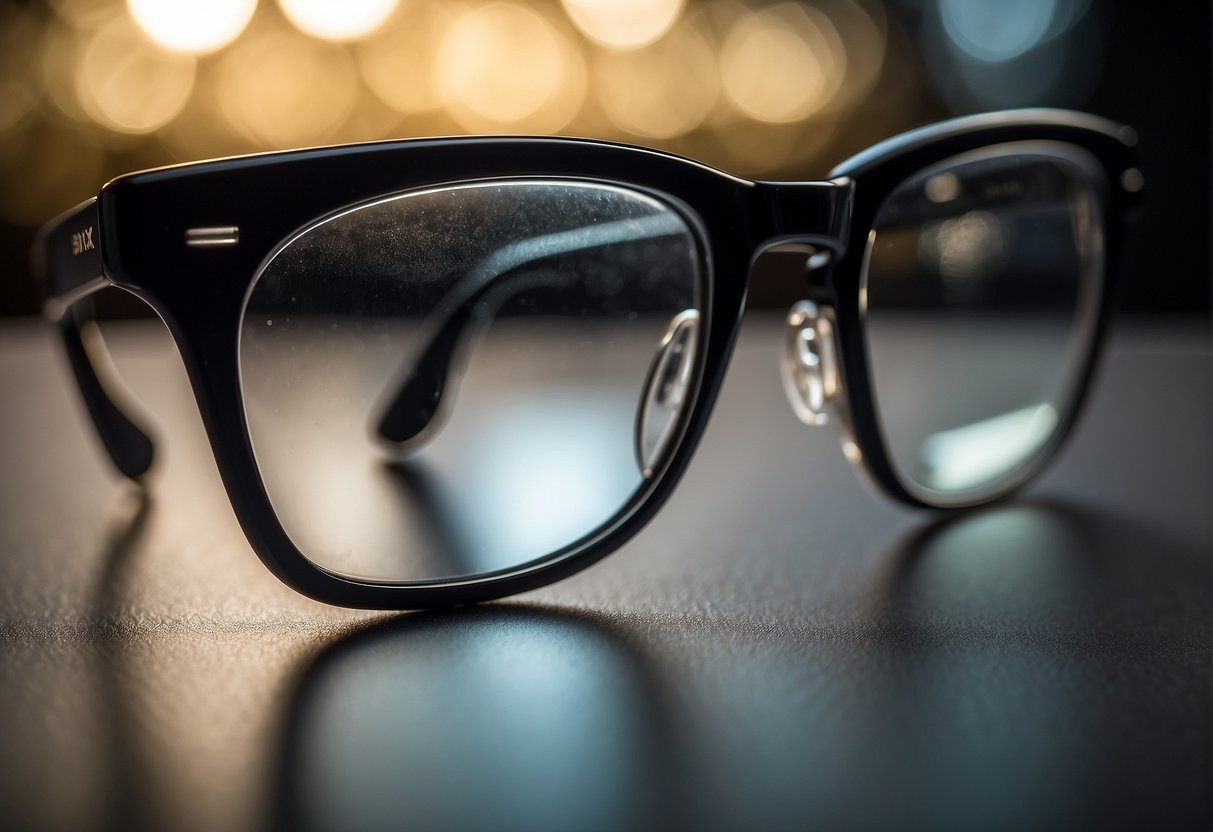
When selecting an anti-reflective (AR) coating for lenses, we need to consider the lens material, our lifestyle needs, and a thorough cost-benefit analysis. The right AR coating enhances vision clarity and comfort.
Lens Material Compatibility
Our choice of AR coating must be compatible with the lens material. Eyeglass lenses come in various materials like polycarbonate, high-index, and more traditional plastic. For polycarbonate and high-index lenses, we require AR coatings that are specifically formulated to adhere to these surfaces. These materials are prone to reflections due to their high reflective indices, so a proper AR coating is essential. Tinted lenses used in sunglasses, or photochromic lenses that adjust to light conditions, also need compatible coatings that do not interfere with their functionality.
- Polycarbonate Lenses: Require durable, multi-layer AR coatings.
- High-Index Lenses: Benefit from coatings that offset the increased reflections.
- Tinted/Photochromic Lenses: Select coatings that support the lens' adaptive features without compromising vision clarity or color perception.
Lifestyle Considerations
The choice of AR coating should reflect our lifestyle demands. For those of us engaged in prolonged computer use, coatings designed to filter out blue light can help reduce eye strain. For driving at night, AR coatings that reduce glare can significantly improve safety and comfort. On the other hand, if we spend a lot of time outdoors, it is important to choose AR coatings that offer UV protection to shield our eyes from harmful UVA and UVB rays.
- Computer Use: Opt for AR coatings that reduce blue light exposure.
- Driving at Night: AR coatings that minimize glare are beneficial.
- Outdoor Activities: Ensure UV protective AR coating is applied.
Cost vs. Benefit Analysis
Weighing the cost against the benefits is key in our decision-making for AR coatings. While the initial investment may be higher, the long-term benefits such as resistance to dirt and smudges, improved visual acuity, and decreased eye strain can justify the expense. Additionally, AR coatings can extend the life of our lenses, making them a valuable addition. It is essential for us to analyze both the upfront costs and the potential long-term advantages when choosing an AR coating.
- Initial Cost vs. Longevity: Higher upfront cost can lead to longer lens life and fewer replacements.
- Vision Quality: Improved clarity and reduced strain can enhance overall visual experience.
Maintenance and Longevity

Maintaining anti-reflective coatings is crucial for preserving the clarity and longevity of your lenses. By employing proper care techniques, we can ensure that our anti-reflective glasses remain in optimal condition.
Cleaning Techniques
To clean anti-reflective glasses, we recommend a specific and gentle approach:
- Materials Needed: Soft, lint-free cloth; lens cleaning solution (preferably one recommended by your optometrist); and running water.
- Procedure:
- Rinse glasses under lukewarm water to remove dust and debris.
- Apply a small amount of lens cleaner to each lens.
- Gently wipe the lenses in a circular motion with the cloth, starting from the center to the outer edges.
- Rinse the glasses again to remove any cleaner residue.
- Dry the lenses with a clean, lint-free cloth. Do not use paper-based products as they may cause scratches.
Using ultrasonic cleaners is an effective but less common method, requiring specialized equipment.
Protecting Against Scratches
To protect anti-reflective coatings from scratches, follow these guidelines:
- Storage: Always store your glasses in a hard case when not in use. Avoid leaving them face down on surfaces.
- Handling: When putting on or removing your glasses, use both hands to maintain the frame's shape and integrity.
- Lens Coatings: Opt for lenses with a scratch-resistant layer to complement the anti-reflective coating. While these coatings are durable, one should note that they cannot be completely repaired, only replaced if significantly damaged.
It's worth noting that many lenses come with warranties that cover certain types of damage, so we should always review and understand our warranty coverage. Additionally, choosing lenses with hydrophobic and oleophobic properties can minimize the accumulation of fingerprints and water stains, making the lenses easier to clean and maintain. Even with these protective measures, the durability of anti-reflective coatings largely depends on our consistent and careful daily handling.
Innovations and Advances in AR Coatings

Advancements in vacuum deposition technology and materials science have led to significant improvements in anti-reflective (AR) coatings. These innovations not only minimize reflective light to improve visual clarity but also make lenses more scratch-resistant.
Latest Technologies
Vacuum deposition technology has evolved, allowing us to apply Shamir Glacier Plus, a cutting-edge AR coating. This technology uses a sophisticated method to achieve unparalleled clarity and durability in anti-glare glasses. It also enables the production of thin film layers engineered to reduce glare and improve light transmission through the lenses.
Meanwhile, polarized sunglasses have been enhanced with AR coatings that further reduce glare from reflective surfaces. As a result, users can enjoy clearer and more comfortable vision.
Lens Scratch Resistance:
- Traditional AR coatings were prone to scratches, which degraded vision quality over time.
- Modern AR coatings, including Shamir Glacier Plus, incorporate hard layers that significantly improve resistance to lens scratches.
Enhancing Clarity:
- Early anti-glare glasses often suffered from residual reflections, which could be distracting.
- Innovations have resulted in lenses that nearly eliminate all reflective light, providing a nearly invisible lens appearance.
Future Outlook
In the future, we expect to see more resilient and adaptable AR coatings. These coatings will not only continue to diminish glare and reflection but are also expected to self-heal from minor scratches. This will prolong the usability and lifespan of reflective lenses.
Vacuum Deposition Progress:
- Researchers are working on developing eco-friendlier processes and materials.
- They’re also looking into further miniaturizing the thin film technology, which could result in even lighter and more flexible lenses.
User-Centric Innovations:
- There is an ongoing effort to tailor AR coatings to different lighting conditions, enhancing user experience.
- Advances in polarized technologies aim to integrate higher degrees of polarization for more effective glare elimination without compromising the optical clarity.
Our focus remains on delivering technologies that enrich the visual experience and cater to the dynamic needs of eyewear users.
Frequently Asked Questions
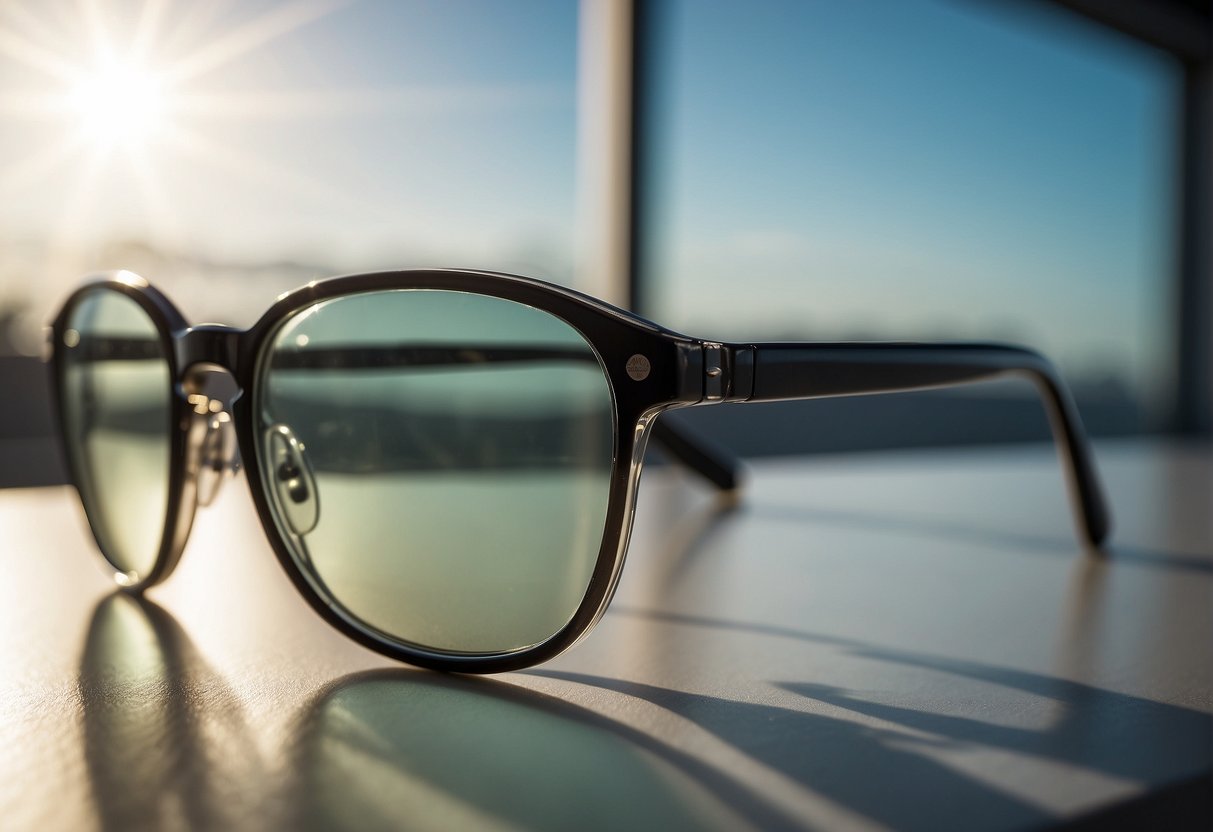
Anti-reflective coatings on eyeglasses offer several advantages, from enhancing visual clarity to reducing glare. We will address common queries about this beneficial feature.
What are the benefits of having anti-reflective coating on eyeglasses?
Anti-reflective (AR) coating greatly reduces light reflections on both the front and back side of eyeglass lenses. By doing so, it helps to improve vision, reduce eye strain, and make eyeglasses look more attractive as the eyes of the wearer are more visible.
How does anti-reflective coating on lenses enhance visual clarity?
Designed to eliminate reflections, an AR coating allows more light to pass through the lenses. This increases contrast and sharpness, significantly enhancing visual clarity for the wearer in both low-light and brightly lit conditions.
Can anti-reflective coatings reduce glare from digital screens?
Yes, AR coatings can help minimize glare from computer screens and other digital devices. This makes them particularly beneficial for individuals who spend long hours in front of screens, as it can help mitigate digital eye strain.
What are the typical costs associated with applying anti-reflective coating to eyewear?
The cost to apply AR coating can vary depending on the lens material and the retail provider. Generally, consumers can expect to pay an additional $20 to $100 for adding an AR coating to their eyeglass lenses.
How is anti-reflective coating applied to glasses, and what materials are used?
The application involves multiple layers of metal oxides applied to the lens in a vacuum environment. These thin layers are engineered to block specific wavelengths of light, thereby reducing glare and improving lens transmissivity.
What are the potential drawbacks or maintenance concerns for glasses with anti-reflective coating?
AR coating is highly beneficial, but it can require more careful cleaning to avoid smudges and scratches.
Exposure to harsh chemicals or abrasive materials can damage the coating. As such, it requires careful handling and the use of specific cleaning solutions.

